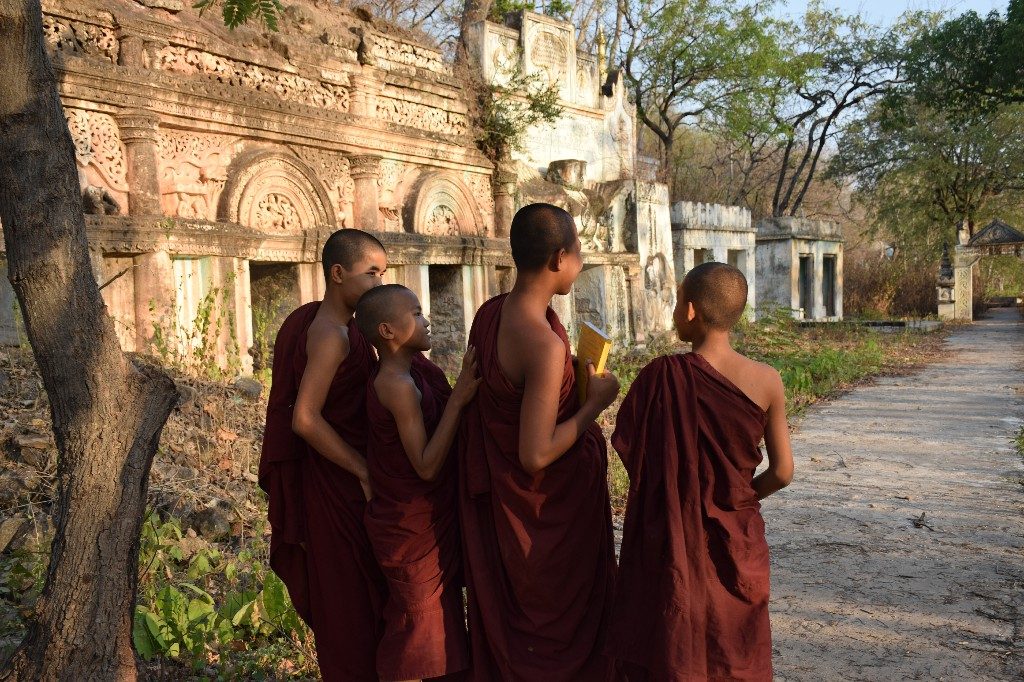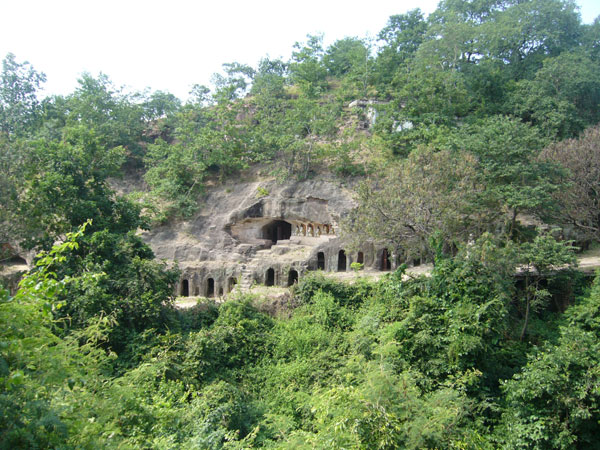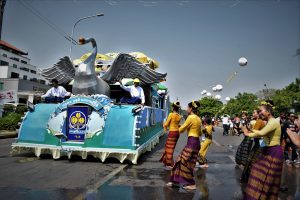Powin cave or Powin Taung
Powin Taung has different spellings: Powun daung, Hpowin taung, Po Win Daung etc….
It also has different meanings:
“Hill to mature on the way to Nibbana” refers to the hill as a religious place where monks, hermits and lay devotees have come to meditate for many centuries.
Another version is Hill of Pho Win, refers to an alchemist, with supernatural powers call U Pho Win, whose name was given to the hill.
Po Win taung also means Hill of alchemists, the hill as a place where alchemists worked and practice alchemy.

There are around 800 caves and 500 caves are visitable. The caves contain Buddha statues and Mural date back to 17th and 18th century. Some are 14th to 16 century.
The historical origin of the Buddhist Rock site of Powin Taung is unknown. As there is no written documents, there is no answer for who started to make the first Buddhist cave of Powin Taung. According to typology of the cave, we can understand the nature of the site and its function.
The caves were dug over several periods from 14th to late 20th century. The oldest caves were not intended to shelter monks as they are small and has narrow path between the rows of Buddha statues. These caves were built for praying, meditating and educating.
The unique feature of murals at Powin Taung is in man-made caves and not in building.
The caves have been dug into a sandstone formation consisting of three types of rocks: sandstone, tuffaceous sandstone and ferruginous sandstone.
The cavities dug in the rock range from a single niche to a network of galleries. Some of the wall neighboring caves are so thin and accidentally perforated.
There are different forms of caves:
Quadrangular caves are either square or rectangular, there are two types, single-room caves and caves with several interconnected rooms. The main images of the caves are always sitting Buddha sculpted in the back wall facing the entrance.
The connection between the rooms of some caves seem to have been made later.
Caves with a central image, in the middle of the cave it is just a column made from native rock with four Buddha images.
Caves with galleries: can be single gallery or orthogonal gallery. Single gallery caves have been dug parallel to the massif and Buddha images were curved in the native rock of the wall.
Some caves dug during the colonial period under British administration. The entrance of the building made of stone blocks covered with stucco reliefs that show European influences.
Caves were donated by different donors in different period. It seems the caves are not as a place cult, donor intended to get merit as some caves are very small and just like the niches around the sandstone mountain. There is no unity at the several caves because they were donated by several donors. Some caves were left incomplete. Some have murals around only some of their entrances. The site of Po Win evolved with the flow of donations, no master plan.
Po Win village
There is Po Win village with a population of five hundred people near the caves. December is the month they held Po Win Taung annual pagoda festival. Like other pagoda festivals, food stalls, local product sellers especially Myanmar Thanakha, sandalwood, woven textiles can be bought at the various stalls.
Shwe Ba Taung
1 km from Po Win Taung there is another man made caves Shwe Ba Taung rock site date from the colonial area is also recommendable to visit if you have enough time.
How to get Po Win Taung
Just one hour drive from Monywa by private car.
Another option is take the boat at the jetty to cross Chindwin River for 10 minutes. Hire Jeep or pickup at the other bank of the river to Po Win Taung.




